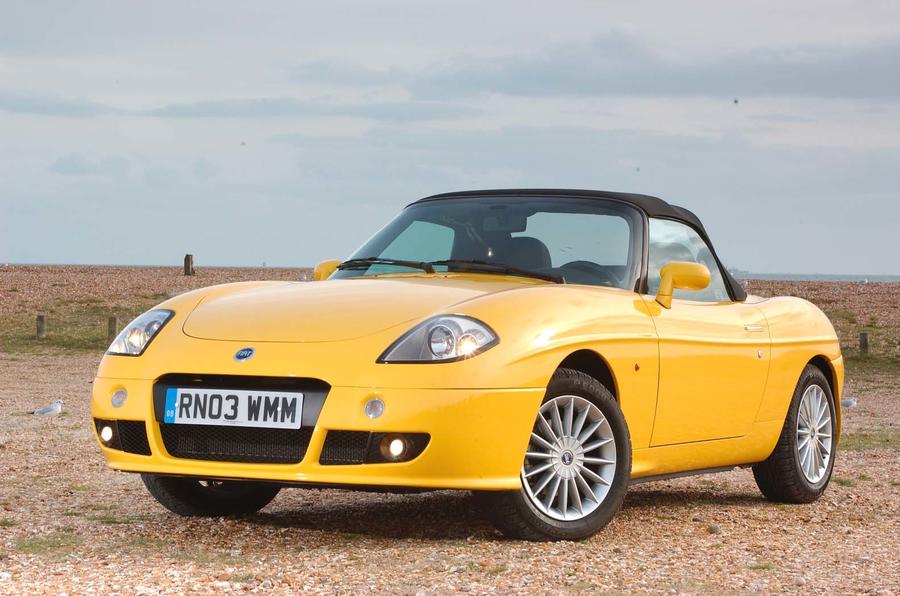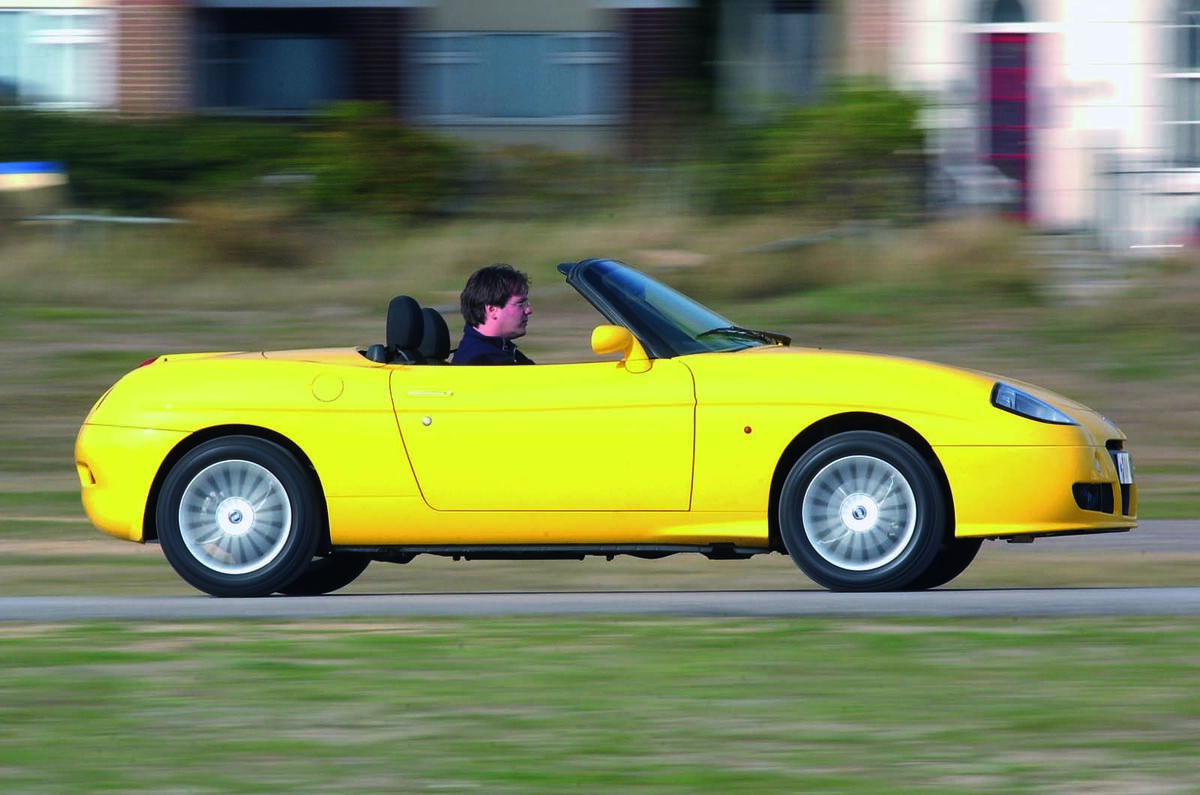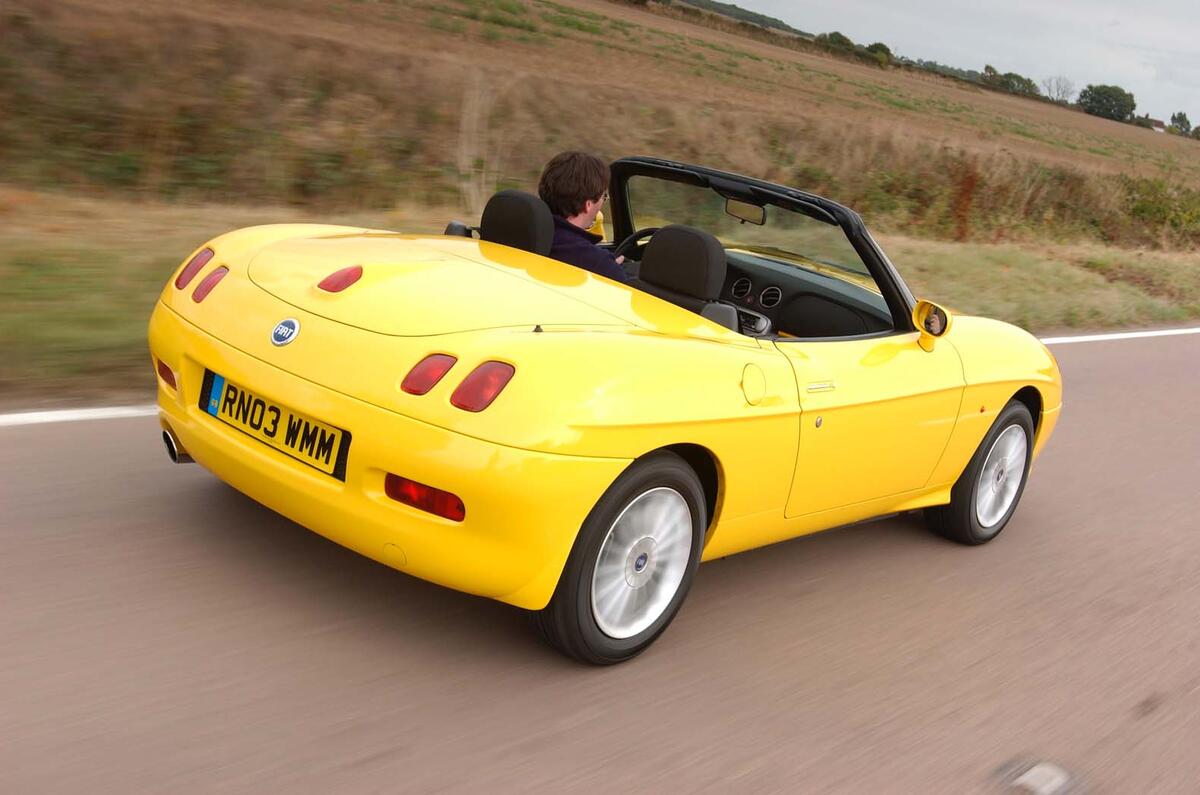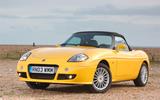The Fiat Barchetta two-seat convertible of 1995- 2005 is a sort of thinking driver’s Mazda MX-5.
Without question, the Mazda is the easier decision to make, but plump for the Fiat and you’ll be rewarded by a sweet and surprisingly tenacious front-drive set-up, more artful styling and a degree of rarity that will have onlookers doing double-takes.
True, you’ll have to sit on the wrong side of the car to steer it but that’s just part of its charm. The big issue is corrosion. Old MX-5s rust badly, too, but the Barchetta fell prey from day one. The floor and the rear wheel arches suffer worst. A faulty rear hood seal and UK cars’ generous underseal (it traps water, causing the floor to rot) are the culprits. Another, although far less serious, weak spot is the variator. It controls the inlet timing and can become seized, causing the engine to run badly and make a noise not unlike a diesel engine at around 2000rpm. It’s not terminal but will need replacing. It’s best to do it, along with the water pump, at every second cambelt change. This job falls every three years or 36,000 miles. The belt itself is durable; it’s the tensioner that can fail. The problem lies in its lubrication. Rarely used cars are most at risk because the bearing grease is allowed to sink, causing the bearings themselves to run dry. Then the tensioner seizes, the belt jumps and you need a new engine.
Find a Fiat Barchetta for sale on PistonHeads

The Barchetta was launched in 1995, some five years after the original MX-5. Being left-hand drive and having Punto underpinnings, it could never hope to unseat its Japanese rival. Even so, it proved reasonably popular, especially with unofficial importers who wasted no time undercutting Fiat UK prices. Fiat would eventually get its own back when, in 2003, it launched the facelifted version (restyled nose, foglights and a leather steering wheel) with a £2800 price cut. These last-plate versions are less desirable than prettier, pre-facelift cars, though.





















Join the debate
Add your comment
Not plain sailing but lovable
This article feeds my current fascination with these cars very nicely, I’ve just hired one for a weekend in the south of France and absolutely loved it. Quick enough, sweet handling, throaty exhaust note and the design overall has barely dated. There were gremlins for sure - third gear crunched every time, the speedo rarely worked, nor did the rev counter and the smell of petrol in the cabin was overpowering. There were no deadlocks either so locking the car with the roof down was entirely pointless… Oh, and putting down the roof could happily take your fingers off and the door handles are design over function even if they look great. But it’s a neo-classic to fall in love with, I doubt I would have come away wanting to buy an old Mazda MX5 in the same way. Also, I’ve also never understood why there aren’t more comparisons made to the MGB in the styling, when you’re sat inside the car the curves front and back are very similar.